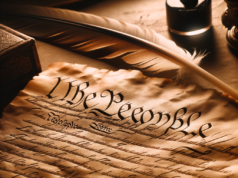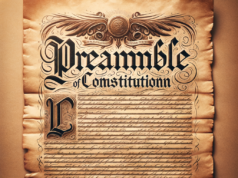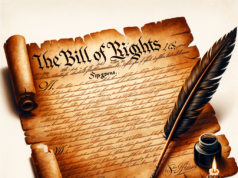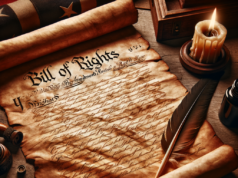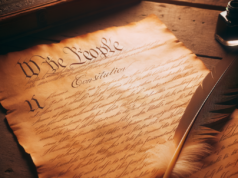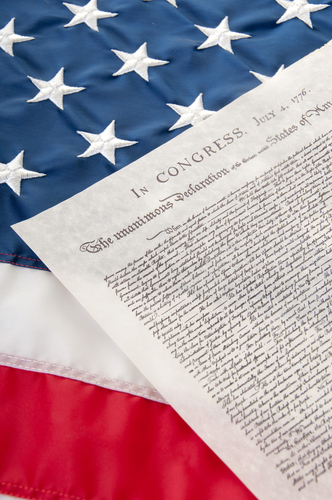Table of Contents

Understanding the Parts of the Constitution
Introduction
The United States Constitution is a revered document that serves as the supreme law of the land. It is a concise but profound blueprint for the American government, outlining the structure, powers, and limitations of each branch. To grasp its significance fully, one must understand the different parts of the Constitution, each playing a critical role in ensuring a balanced and democratic government.
The Preamble
The Constitution begins with The Preamble, a brief but powerful introduction that outlines the document’s purpose. It states:
We the People of the United States, in Order to form a more perfect Union, establish Justice, insure domestic Tranquility, provide for the common defence, promote the general Welfare, and secure the Blessings of Liberty to ourselves and our Posterity, do ordain and establish this Constitution for the United States of America.
The Preamble underscores the foundational principles of unity, justice, peace, defense, welfare, and liberty that guided the framers in creating the Constitution.
Article I: The Legislative Branch
Article I establishes the first branch of government, the Legislative Branch, which consists of the United States Congress. It is divided into two houses: the House of Representatives and the Senate. Article I grants Congress the authority to make laws, regulate commerce, and levy taxes, among other powers. It also outlines the qualifications and responsibilities of members of Congress.
Article II: The Executive Branch
Article II focuses on the Executive Branch, headed by the President of the United States. This section outlines the President’s powers and duties, including serving as Commander in Chief of the armed forces, negotiating treaties, and nominating federal judges. It also establishes the Electoral College for presidential elections.
Article III: The Judicial Branch
Article III establishes the Judicial Branch, responsible for interpreting and applying the law. It establishes the Supreme Court and grants Congress the authority to create lower federal courts. This section also outlines the types of cases that fall under the jurisdiction of the federal judiciary, such as cases involving federal law or disputes between states.
Article IV: The States
Article IV addresses the relationship between the states and the federal government. It ensures that each state respects the laws and judicial decisions of other states and establishes the process for admitting new states into the Union. Article IV also guarantees a republican form of government for each state and protects states from invasion or domestic violence.
Article V: Amendments
Article V outlines the process for amending the Constitution. It can be amended through two methods: by a two-thirds majority vote in both houses of Congress or by a convention called for by two-thirds of state legislatures. Amendments are crucial for adapting the Constitution to changing circumstances and societal needs.
Article VI: The Supremacy Clause
Article VI contains the Supremacy Clause, which declares that the Constitution, federal laws, and treaties are the supreme law of the land. It also requires all government officials, both federal and state, to take an oath to support the Constitution.
Article VII: Ratification
Article VII provides the process for ratifying the Constitution. It required the approval of nine out of thirteen states to go into effect. This article demonstrates the importance of state consent in forming the Union under the Constitution.
Conclusion
The United States Constitution is a brilliantly crafted document with distinct parts that work harmoniously to establish a framework for governance, protect individual rights, and promote the common good. Each section plays a unique role in maintaining the balance of power and ensuring the principles of democracy and liberty endure. Understanding the parts of the Constitution is essential for appreciating the nation’s enduring commitment to self-governance and the rule of law.
Preamble:
The Preamble to the Constitution is not vital from a purely legal perspective, as the Preamble does not have any legal value in and of itself. The Preamble is also a very short part of the Constitution, as it is actually a single sentence, and therefore, does not make up any significant part of the Constitution in terms of length. The importance of the Preamble lies not in these two senses, but instead lies in the precedent the Preamble establishes for the rest of the Constitution.
The Preamble was the Founding Fathers’ way of informing future generations of their motives and intent in writing the Constitution, as well as a way of establishing the most basic principles necessary for consideration of the Constitution. The opening words of the Preamble are “We the People of the United States”, which are perhaps the most well-known words in the Constitution. These words are critical to understanding that the Constitution was designed to establish a government empowered by the will of the people and for the good of the people.
The Preamble has often been used by Constitutional scholars in order to determine how other parts of the Constitution should be interpreted, as the Preamble does outline several basic purposes for the creation of the Constitution. Each of these basic purposes provides insight and understanding into the Constitution but does not actually provide any legal force. When used in court, the Preamble only ever provides an open guide for interpreting the Constitution and never provides any legal rules that must be followed. This has been proven in a number of cases in which a litigant attempted to argue for his position based on the words of the Preamble. Even though the Preamble does not have such legal power, it bears great significance for the Constitution as a whole and for any person’s understanding of that document.
Articles:
Following the Preamble, the United States Constitution is divided into seven Articles that comprise the original legislation as it was drafted by the funding Fathers 1787 at the Constitutional Convention. The Articles of the Constitution provides for the architecture that comprises the United States supreme law. Articles One through Three set up the three branches of the United States Federal Government.
Article Implements the Legislative Branch and creates the bicameral legislation that is to become Congress.Article details the Executive Branch and provides for the powers of the President of the United States.Article IIIcreates the Judicial Branch and delegates the. responsibilities of the court system. Article of the Constitution provides for the scope of the States’ powers. Article V consists of provisions regarding amendments that are to be made to the Constitution.Article VIestablishes the Federal power of the United States Government and establishes the Constitution as the supreme law of the land. Last but not least, Article VIIsets the requirements for the ratification of the Constitution, stating that at least nine states of would be needed to ratify the Constitution. The Seven Articles of the Constitution set forth the United States Government and provides for the backbone of the Federal the power that is to be implemented by the country.
Constitutional Amendments:
The Framers of the Constitution knew that there would have to be changes made to the document in due time. The changes that the unforeseen future of the The United States would bring inevitable changes to the Constitution in order to provide for the well-being of the nation as a whole. Therefore, it is not a surprise that article Vof the Constitution provides for the process in which amendments to the original legislation could be made. The process is two-fold: Amendments must first be proposed and then ratified by the States.
As of today, there have been a total of twenty-seven amendments made to the Constitution, all of which were proposed in Congress by way of a two-thirds vote. However, amendments can also be proposed if two-thirds of the States demand a specific change. Amendments, once proposed, must also be ratified by the states as required by article VIIof the Constitution. The Amendments of the Constitution comprise a vast array of legislative changes that range from civil and human rights of the people to the topic of pay raises in the United States Congress.
The first ten Amendments comprise what is known as the Bill of Rights. The Bill of Rights is actually comprised of twelve Amendments, however, only the first ten were ratified. The Twenty-Seventh Amendment was the second of the last two Amendments and was ratified in 1992. The first of the last two still remains unratified and pertains to the concept of apportionment for the house of Representatives.



